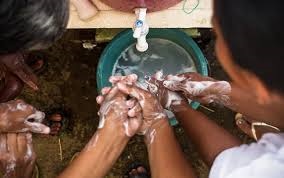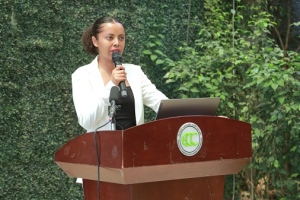One Ruling Party Vs Numerous Opposition Groups
In Ethiopia the ruling party EPRDF will have been in power for nearly three decades by the time the next general election is due in 2020. The EPRDF claims to have given itself a facelift since Abiy Ahmed made the Grand Menilik Palace his residence as the first popular but unelected Prime Minister of Ethiopia.
Admittedly, PM Abiy has released prisoners jailed on trumped-up charges, improved the human and democratic rights environment and generally opened up the political space and has established commendable rapprochement with the hitherto enemy number one Eritria and other neighboring countries. Further, his erstwhile timid move against corruption and human rights violation has been ratcheted up to a milestone crackdown since around November 10, 2018.
Yet a lot remains to be done. The PM still seems to be inclined to go ahead with the next general election as scheduled, although he showed a measure of flexibility on the matter in his discussions with some eighty-one opposition parties and organizations held on November 26, 2018. On the question of amending or repealing the constitution, which apparently is the root cause of most of the political problems in the country, his response was of postponing the issue until after the general election.
This is quite understandable as substantially amending it would technically mean the end of the EPRDF’s constitutional legitimacy, and, of course, this would leave the country without a government, which nobody in their right senses would want to have, unless of course a coup was staged.
In the above-mentioned discussions, the PM voiced his concern about the proliferation of political parties which now number, as cited above, about 81 of which 62 are registered by the National Electoral Board (NEB), and the remaining 19 are yet to be registered including those which have recently returned from abroad, some of them after giving up arms in favor of peaceful political participation.
The PM’s advice was to reduce the number of opposition parties to three or four on the basis of ideological orientation, ostensibly forgetting that the constitution is based on ethnicity rather than on citizenship, its most pernicious flaw! The logical conclusion from the ethnicity-based constitution is that there are bound to be some 85 ethnic political parties, irrespective of their population sizes (85 is the approximate number of ethnic groups in Ethiopia).
The Upcoming General Election
As things stand now, the next general election is likely to be held sometime in April/May 2020. As hinted above, the election will be based on the constitution in force since 1987 E.C. (1994/95 G.C.). As promised by the PM, electoral laws and regulations considered to be inimical to the holding of a free and fair election will all be appropriately amended.
The current election board (the NEB) will be restructured and renamed (perhaps National Election Commission) to make it free and independent. Of course, nothing less can be expected with the formidable Birtukan Mideksa, a former high-profile politician of sterling character at the helm of the NEB. With the ‘Iron Lady’ in control at the NEB, one thing is quite certain: there is going to be a free and fair election, or there is going to be no election at all!
Alignment of Forces
Holding a free and fair election in which some 81 political parties and organizations are taking part is obviously an administrative and logistical nightmare, which is why the PM suggested reducing their number drastically, albeit ignoring the practical implications of the constitution. At any rate, coalition politics seems to be the key solution to the fractious political cacophony. Of the officially registered 62 political parties, 40 are ethnicity-based, and of those which returned from abroad the most prominent in terms of followings are Arbegnoch Ginbot 7 and OLF.
In my opinion, the primary overarching and single most important election issue is the question of political ethnicism versus citizenship politics, although ideological as well as economic issues such as social democracy, liberal democracy, free and competitive economics, land ownership, education and housing problems, etc. are to figure prominently as issues of secondary importance. Rare as political ethnicism is in the world, it is nevertheless difficult to dislodge easily when it has been instilled in the populace for over twenty seven years, as has unfortunately been the case in Ethiopia. Hence, opposition parties must perforce blend tactics and strategies in ever subtle ways to achieve their common objective of a unified electorate and political space.
One feasible tactic is to drive a wedge between the pro-secessionist ethnic political camp and the anti-secessionist ethnic bloc. EPRDF, the governing party, must be considered to be a pro-secessionist front as it is the group that not only wrote the article in the constitution which confers the right to secession on ethnicities (Article 39), but also stripped the Ethiopian people of their collective sovereignty and bestowed it on individual ethnic groups. All those other groupings which have joined or allied themselves with the EPRDF, will also be so categorized. Recently, the Oromo Democratic Front, the Oromo Liberation Front and the Oromo National Congress have entered into cooperation or unification political alliance with EPRDF thus rightly earning the characterization as pro-secessionist.
By contrast, ethnic parties and organizations based in the South of Ethiopia, in Amhara, in Tigray, in Afar and in towns and cities, etc. which are not members of EPRDF are presumed not to be pro-secessionist, which indicates that they are likely to join forces with citizenship-based parties such as Arbegnoch Ginbot 7 Genbar, Samayawi, MEIAD, IRAPA, etc. In fact, Oromo Federalist Congress, led by the veteran politician Dr. Merera Gudina, has often voiced his doubts about the feasibility and viability of secession for Oromia, the largest and most populous region in Ethiopia. Hence, if the two opposition heavyweight leaders, namely Professor Birhanu Nega and Professor Merera Gudina form a political front and bring in as well non-secessionist ethnic groupings into their fold, they are likely to stack the odds against the ruling EPRDF and win the election handsomely.
Probable Election Results for the Anti-Secessionist Front Scenario
As has often been repeatedly said, the EPRDF constitution was never endorsed by the people in a formal free and fair referendum, which is why the secession Article 39 and ethnic sovereignty articles were blatantly written into the constitution. Hence, as of recent years, the population of the Ethiopian people who would opt to secede from the union if a free and fair election were held would be at most no more than 20 percent. This would indicate that the anti-secession bloc would garner as much as 80 percent of the popular vote, which would usher in the demise of the dictatorial and kleptocratic EPRDF.
General Election Strategy for the Opposition
With the ‘Iron Lady’ Birtukan Mideksa at the helm of the Ethiopian Electoral Board, I am personally certain that a free and fair election will be held come May 2020. As hinted above, a winning election strategy for the opposition would be to rally non-secessionist ethnic and citizenship-based political parties and organizations around a pivotal Birhanu/Merera front. In reality, the upcoming election is largely going to be a referendum on the existing constitution, and the outcome may be predicted to be, with a relatively high degree of certainty, a rejection of same by a pretty comfortable margin. After the election, the first order of business is likely to be the amendment of the constitution or totally scrapping it and writing a whole new constitution based on citizenship and inalienable sovereignty of the Ethiopian People.
Herald December 16/2018
by TEKLEBIRHAN GEBREMICHAEL





